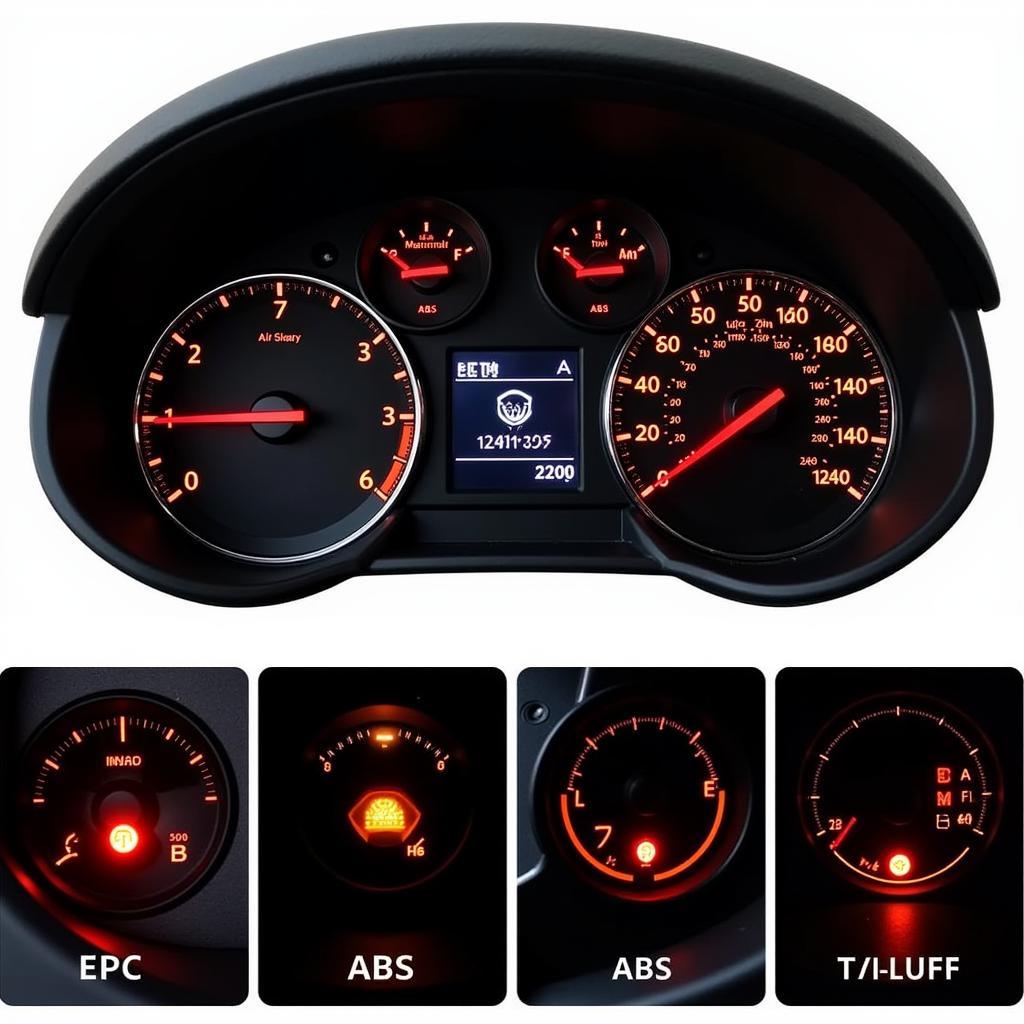The 2006 Nissan Altima brake warning light can illuminate for various reasons, ranging from low brake fluid to serious issues like a failing ABS system. Understanding what triggers this light is crucial for maintaining your vehicle’s safety and preventing costly repairs. This comprehensive guide will walk you through the common causes, troubleshooting steps, and potential solutions for the 2006 Nissan Altima brake warning light.
Common Causes of the Brake Warning Light
Several factors can activate the brake warning light in your 2006 Nissan Altima. Some of the most frequent culprits include:
- Low Brake Fluid: This is the most common cause. Brake fluid naturally depletes over time, and a low level can trigger the warning light.
- Worn Brake Pads: As your brake pads wear down, the brake fluid level in the reservoir drops. If the pads are excessively worn, the warning light will illuminate.
- Faulty Brake Sensor: A malfunctioning brake pad wear sensor can incorrectly signal low brake fluid or worn pads, even if they are in good condition.
- ABS Issues: Problems with the Anti-lock Braking System (ABS), such as a faulty sensor or pump, can trigger the brake warning light.
- Parking Brake Engaged: Sometimes, simply forgetting to disengage the parking brake can cause the light to stay on.
Troubleshooting the 2006 Nissan Altima Brake Warning Light
Before rushing to a mechanic, you can perform some basic troubleshooting steps yourself. These checks can help identify the problem and potentially save you money.
- Check the Parking Brake: Ensure the parking brake is fully released. This simple oversight is often the cause of the illuminated warning light.
- Inspect the Brake Fluid Level: Open the hood and locate the brake fluid reservoir. Check the fluid level against the minimum and maximum markings. If it’s low, add the correct type of brake fluid recommended for your 2006 Nissan Altima.
- Visually Inspect the Brake Pads: If possible, look at your brake pads through the wheel spokes. If they appear thin or worn down, they likely need replacing.
Advanced Diagnostics and Remote Software Solutions
If the basic troubleshooting steps don’t resolve the issue, more advanced diagnostics are required. This is where remote diagnostics and software solutions become invaluable.
As a specialist in automotive electrical engineering, I leverage remote diagnostic tools to pinpoint the root cause of brake system issues. By accessing your vehicle’s data remotely, I can identify faulty sensors, ABS malfunctions, and other electronic problems that may be triggering the warning light. In some cases, remote software updates and programming can address the issue without requiring a physical visit to a repair shop. This cutting-edge technology saves time and money while ensuring accurate and efficient repairs.
When to Seek Professional Help
While some brake warning light issues can be addressed with DIY troubleshooting or remote solutions, others require professional attention. If you’ve checked the basics and the light persists, or if you experience any unusual braking behavior, such as grinding, squealing, or pulling, it’s crucial to consult a qualified mechanic.
“Ignoring a persistent brake warning light can lead to serious safety risks,” cautions John Miller, a seasoned automotive technician with over 20 years of experience. “A proper diagnosis and timely repair are essential for ensuring your vehicle’s braking system functions correctly.”
Conclusion
The 2006 Nissan Altima brake warning light serves as a vital indicator of potential brake system problems. By understanding the common causes, performing basic troubleshooting, and considering remote diagnostic options, you can address many issues efficiently. However, if the problem persists or you notice any unusual braking behavior, seeking professional help is essential for ensuring your safety and preventing further damage to your vehicle. Don’t ignore your 2006 Nissan Altima brake warning light – address it promptly to maintain safe and reliable braking performance.
FAQ
- What is the most common cause of the brake warning light in a 2006 Nissan Altima? Low brake fluid is the most frequent culprit.
- Can I drive my 2006 Nissan Altima with the brake warning light on? It’s not recommended. The light indicates a potential issue that needs addressing.
- How do I check my brake fluid level? Locate the brake fluid reservoir under the hood and check the fluid level against the markings.
- What should I do if my brake warning light stays on after adding brake fluid? Further diagnosis is necessary. Consider remote diagnostics or consult a mechanic.
- How often should I replace my brake pads? Brake pad lifespan varies depending on driving habits, but generally, they should be inspected every 12,000 miles.
- What is remote diagnostics? It’s a method of diagnosing car problems remotely using software and data analysis.
- Can remote software updates fix my brake warning light issue? In some cases, yes. Remote programming can address certain electronic problems.


